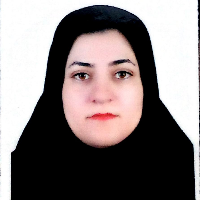Estimation of Esfarayen's Farmers Risk Aversion Coefficient and Its Influencing Factors (Nonparametric Approach
In agriculture we face several decision problems in which, among proficiency and sustainability, the risk aspects have to be investigated more and more seriously. Due to existence of the risk and uncertainty in agriculture, the present study was designed to determine the risk aversion coefficient for Esfarayen's farmers.
The following approaches have been utilized to assess risk attitudes: (1) direct elicitation of utility functions, (2) experimental procedures in which individuals are presented with hypothetical questionnaires regarding risky alternatives with or without real payments and (3): Inference from observation of economic behavior. In this paper, we focus on approach (3): inference from observation of economic behavior, based on an assumed relationship between the actual behavior of a decision maker and the behavior predicted from empirically specified models. A new non-parametric method and the QRP method were used to calculate the coefficient of risk aversion. We maximize the decision maker's expected utility with the E-V formulation (Freund, 1956): Formulate the QRP model to represent the farm's resource base, activities, expected activity net revenue per unit level, fixed costs, variance and covariance of expected GMs which are assumed to reflect the farmer's beliefs and circumstances. Ideally, in constructing a QRP model, the variance-covariance matrix should be formed for each individual farmer. For this purpose, a sample of 100 farmers was selected using random sampling and their data about 14 products for year 2008- 2012 were assembled. The lowlands of Esfarayen were used since within this area, production possibilities are rather homogeneous.
The results showed that there was low correlation between some of the activities, which implies opportunities for income stabilization through diversification. With respect to transitory income, Ra, vary from 0.000006 to 0.000361 and the absolute coefficient of risk aversion in our sample were 0.00005. The estimated Ra values vary considerably from farm to farm. The results show that the estimated Ra for the subsample existing of 'non-wealthy' farmers was 0.00010. The subsample with farmers in the 'wealthy' group had an absolute risk aversion of 0.00003, which is lower than for the subsample existing of farmers in the 'non-wealthy' group. That the absolute risk aversion is a decreasing function of wealth is in accordance with Arrow (1970) expectation. The method used is to calculate the proportional risk premium (PRP) representing the proportion of the expected payoff of a risky prospect that the farmers would be willing to pay to trade away all the risk for a sure thing, proposed by Hardaker (2000). Our finding showed that the more risk averse the farmer is, the higher will the PRP be. Farmers risk premium was 303113 IRR. Also note that the 'non-wealthy' group has a larger PRP than the 'wealthy' group. Following Freund (1956), if the net revenue for each activity is normally distributed and assuming a negative exponential utility function, we can utilized the absolute risk aversion coefficient to obtain relative risk aversion coefficient (Rr). Based our finding, Rr vary from 0.31 to 8.49 and the relative coefficient of risk aversion in our sample were 4.79. According to Anderson and Dillon (1992), our result showed that the majority of farmers in the study area are highly risk averse. We also studied about relationships between the relative risk aversion coefficients of farmers and their Socio- Economic characteristics. Our results showed that the age has a positive impact, level of wealth and diversity has negative impacts on farmer's risk aversion coefficient.
Due to existence of the risk and uncertainty in agriculture, the present study was designed to determine the risk aversion coefficient for Esfarayen's farmers. A new non-parametric method and the QRP method were used to calculate the coefficient of risk aversion. The model used in this analysis finds the optimal farm plan given a planning horizon of 1 year. Thus, the historical mean GM vector and variance-covariance matrix were assumed to represent farmer's beliefs. Our result showed that the majority of farmers in the study area are highly risk averse. According to the results, insurance development and investment in agricultural commodities exchange was suggested to reduce the coefficient of risk aversion.
- حق عضویت دریافتی صرف حمایت از نشریات عضو و نگهداری، تکمیل و توسعه مگیران میشود.
- پرداخت حق اشتراک و دانلود مقالات اجازه بازنشر آن در سایر رسانههای چاپی و دیجیتال را به کاربر نمیدهد.




